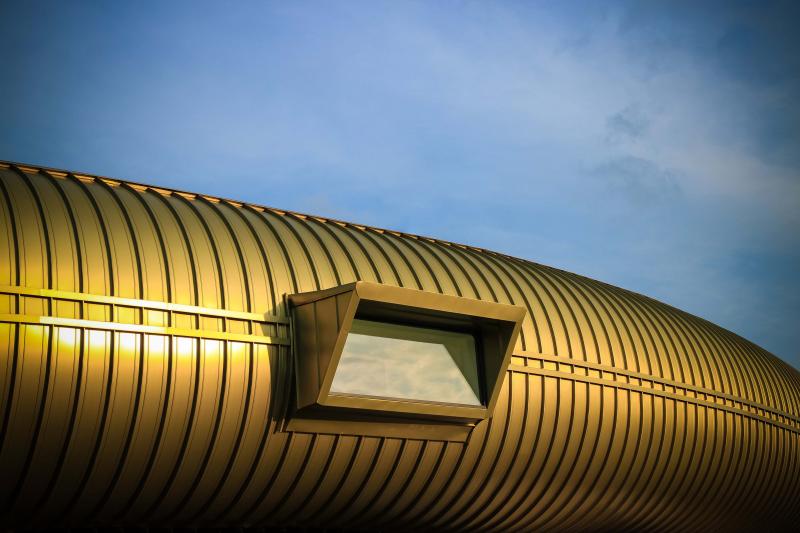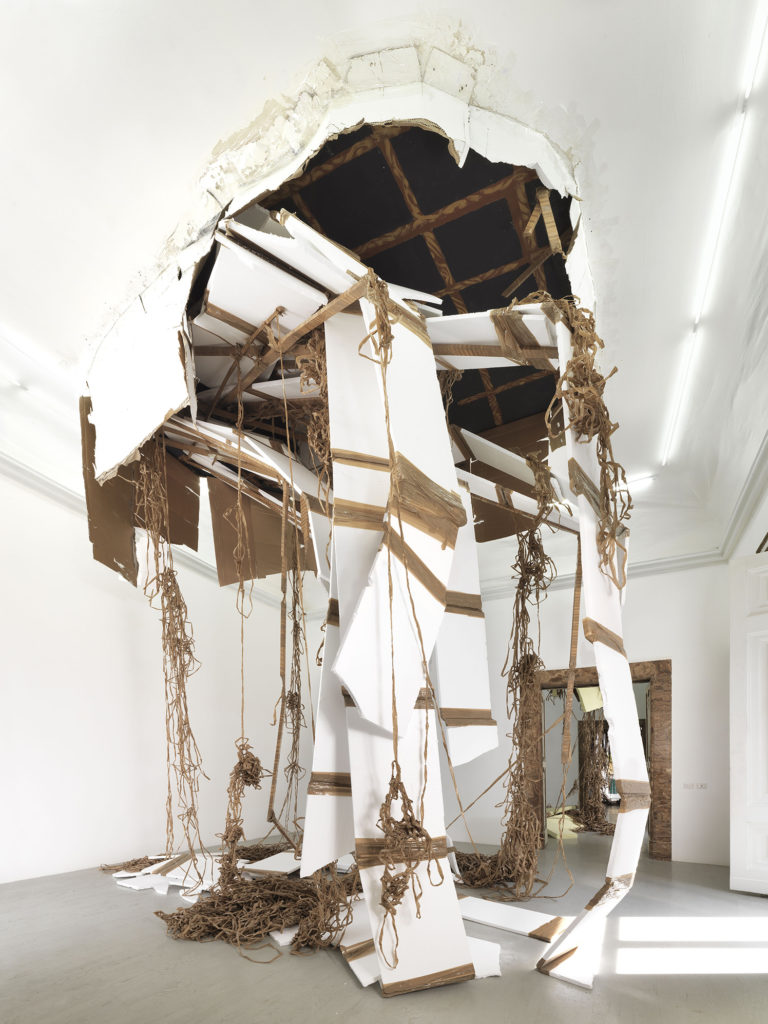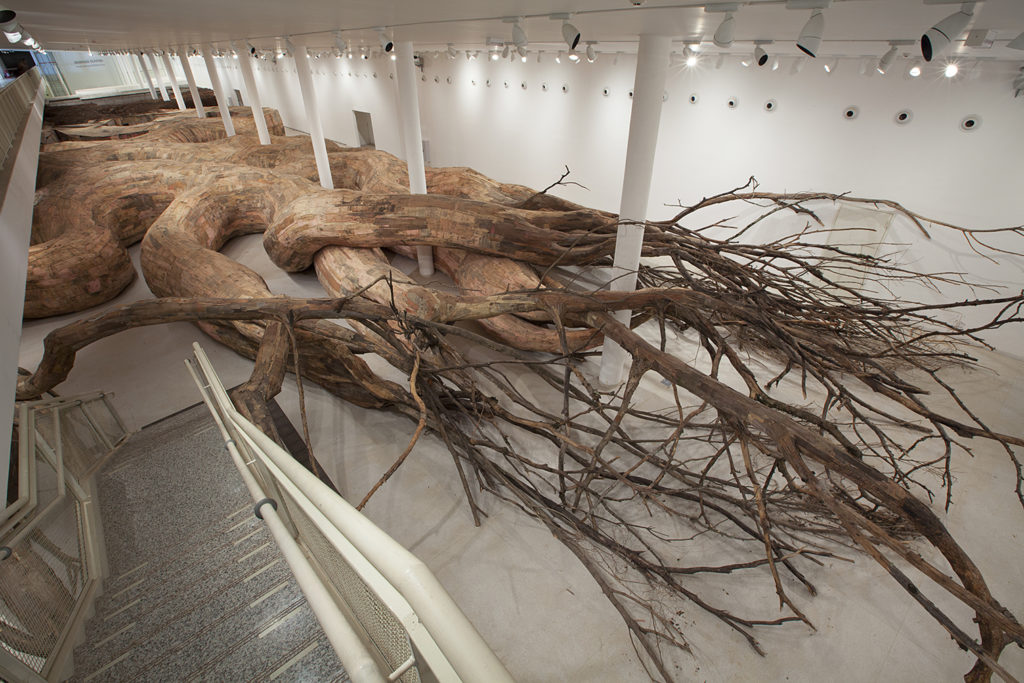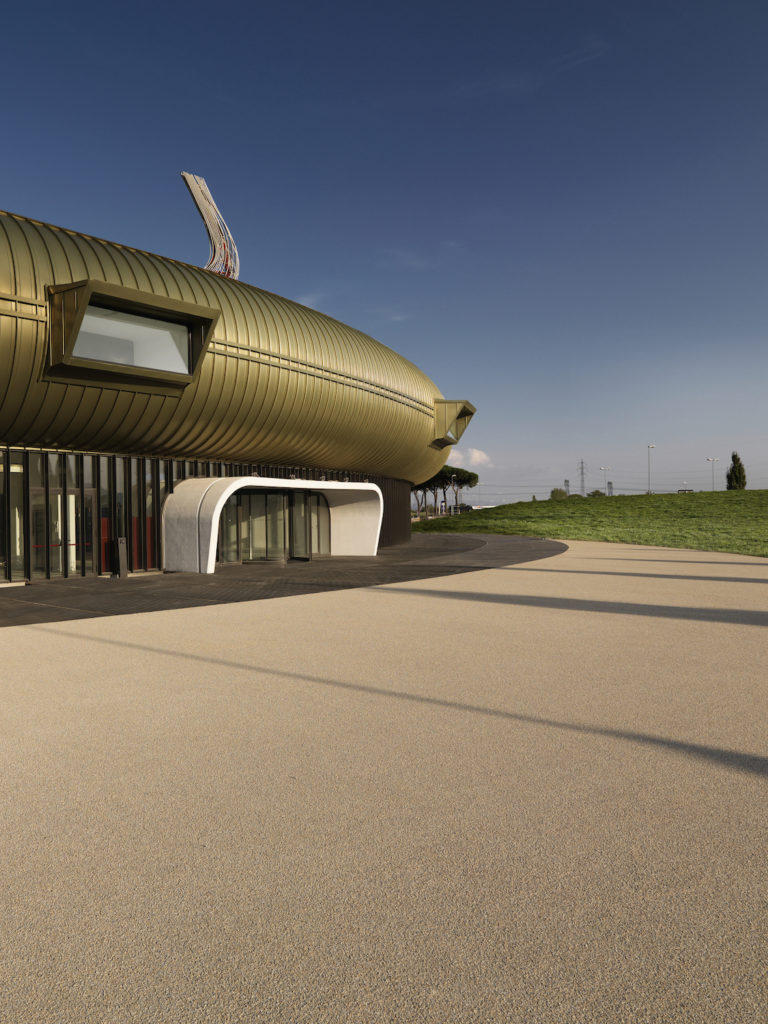Art World
The Pecci Center Reopens Unveiling Futuristic $16 Million Extension
The Italian contemporary art museum returns with renewed ambitions.

The Italian contemporary art museum returns with renewed ambitions.

Lorena Muñoz-Alonso

This past Sunday, the Pecci Center for Contemporary Art in Prato, Italy, reopened its doors to the public after having undergone a dazzling extension designed by the Dutch architect Maurice Nio, to the tune of €14.5 million (around $16 million).
Enveloping the (rather outdated) original building, designed in the late 1980s by the Italian architect Italo Gamberini, Nio’s expansion is a futuristic skin with a ring-shaped top floor that has in fact doubled the museum’s exhibition space, which now spans a total area of over 10,000 square meters.
The inaugural show—somewhat puzzlingly titled “The End of the World” despite serving to herald new beginnings—previewed on Friday night to a select group of VIPs, who had to dash through the museum’s doors under torrential rain, so heavy that it threatened not only their dryness, but also that of some of the interiors, where some small puddles could be spotted in areas near windows.

Thomas Hirschhorn, Break-through (two)(2013). Photo Luciano Romano, courtesy of Galleria Alfonso Artiaco.
Curated by the museum’s director Fabio Cavalluci, the exhibition is definitely ambitious. Drawing mostly from loans rather than from the museum’s own collection, “The End of the World” gathers works by an exciting group of over 50 international artists, including historical heavyweights such as Pablo Picasso, Marcel Duchamp, Umberto Boccioni, and Lucio Fontana; mixed with contemporary stars such as Camille Henrot, Cai Guo-Qiang, Björk, and Jimmie Durham, among many others.
The exhibition, which is generous with spectacular thrills, also features a number of impressive site-specific commissions, including a couple of interventions in the building by Thomas Hirschhorn and an amazing installation by Henrique Oliveira, called Transcorredor.
The Brazilian artist, who made headlines in 2013 with his site-specific installation Baitogogo at Paris’ Palais de Tokyo—which featured a Gordian Knot made of tree branches that seemed to be growing out of, and taking over, the building—has taken matters to a new level at Pecci. Here, visitors enter a room seemingly under construction, where, as they go ahead, the plastered walls turn into exposed bricks, which then turn into a cave of sorts, eventually leading to an exit out of massive felled tree. Needless to say, VIP guests, feeling like gnomes in a mysterious and magical land, were having a blast.

Henrique Oliveira, Transarquitetonica (2014) at Museu de Arte Contemporânea, São Paulo, Brazil. Photo Everton Ballardin.
Oliveira’s installation was all the more beguiling and bewildering during the VIP preview as many of the works in the show were still being installed as the first guests strolled by, in a what looked more like a construction site than a white cube gallery. Henrot’s 2013 hit video Grosse Fatigue? Still not installed. A 2016 floor installation by Carlos Garaicoa? Undergoing some last minute touches, tools and stepladders still on it. Duchamp’s Bottle Rack? Quietly waiting behind a cardboard fence to be properly placed and lit.
It was a bit of a shame to see such an ambitious show half-installed, but the (seemingly) relaxed attitude of the team, who jokingly referred to the situation as a “work in progress” was charming. Meanwhile, the lightning thundered outside as the streets were getting drenched under the pouring rain, made for a highly atmospheric experience–perhaps the ideal weather for a show about the end of the world.
By Saturday, the day scheduled for the press views, the skies had mercifully cleared, and on Sunday, when the museum opened to the public, a whopping 12,000 visitors came through the doors, according to the museum press team (I can only hope the show was fully installed by then).

Façade of the new Pecci Center, designed by Maurice Nio. Photo Lineashow, courtesy Pecci Center.
But how did this city in Tuscany, best-known for its strong textile industry rather than any artistic affiliations, become host to a museum of contemporary art boasting a collection of over 1,145 works, including pieces by Andy Warhol, Vito Acconci, Valie Export, Anish Kapoor, Jannis Kounellis, and Barbara Kruger, as well as a trove of Italian contemporary art?
The Pecci museum was first inaugurated in 1988, under the auspices of Enrico Pecci, a Prato-based industrialist who, upon losing his son prematurely in 1973, decided to create a museum of contemporary art in his honor. But the center was never to be a private initiative, as from early on, the project was a collaboration between private patrons and companies and public bodies like the City of Prato.
According to a press release from the museum, with this handsome new extension, the Pecci Center has become the only contemporary art institution in Italy to inaugurate a new building in the whole of the 2010-2020 period. A bold move for a regional institution with international ambitions.